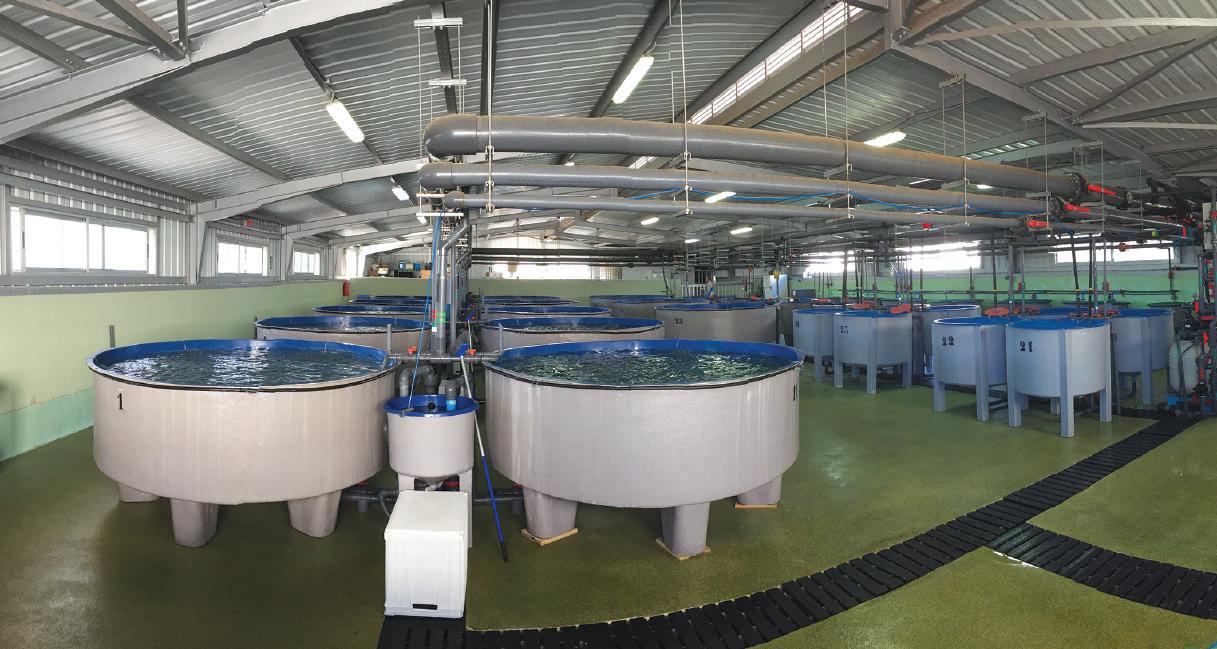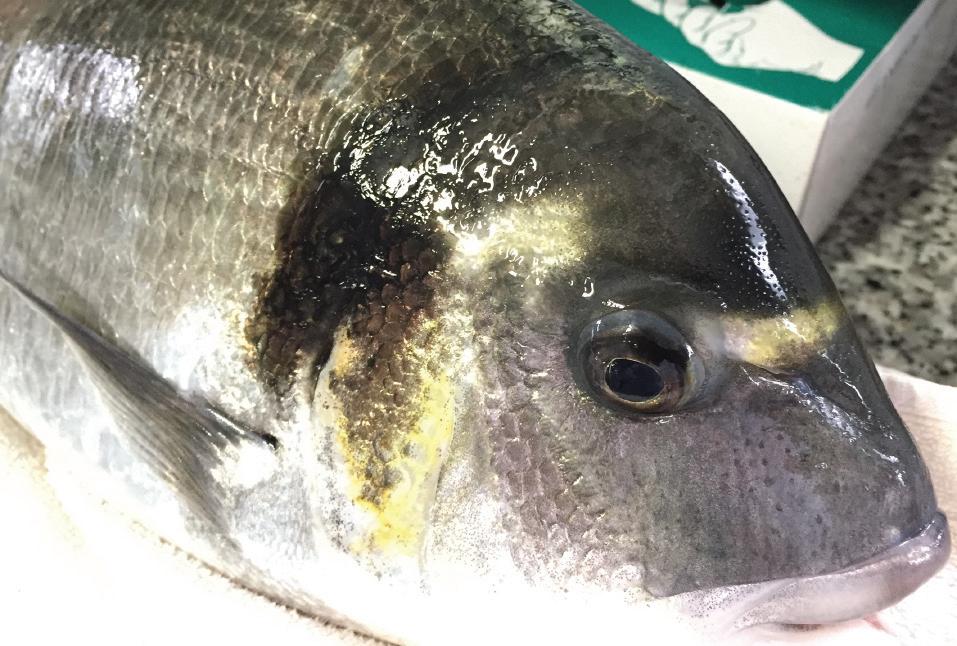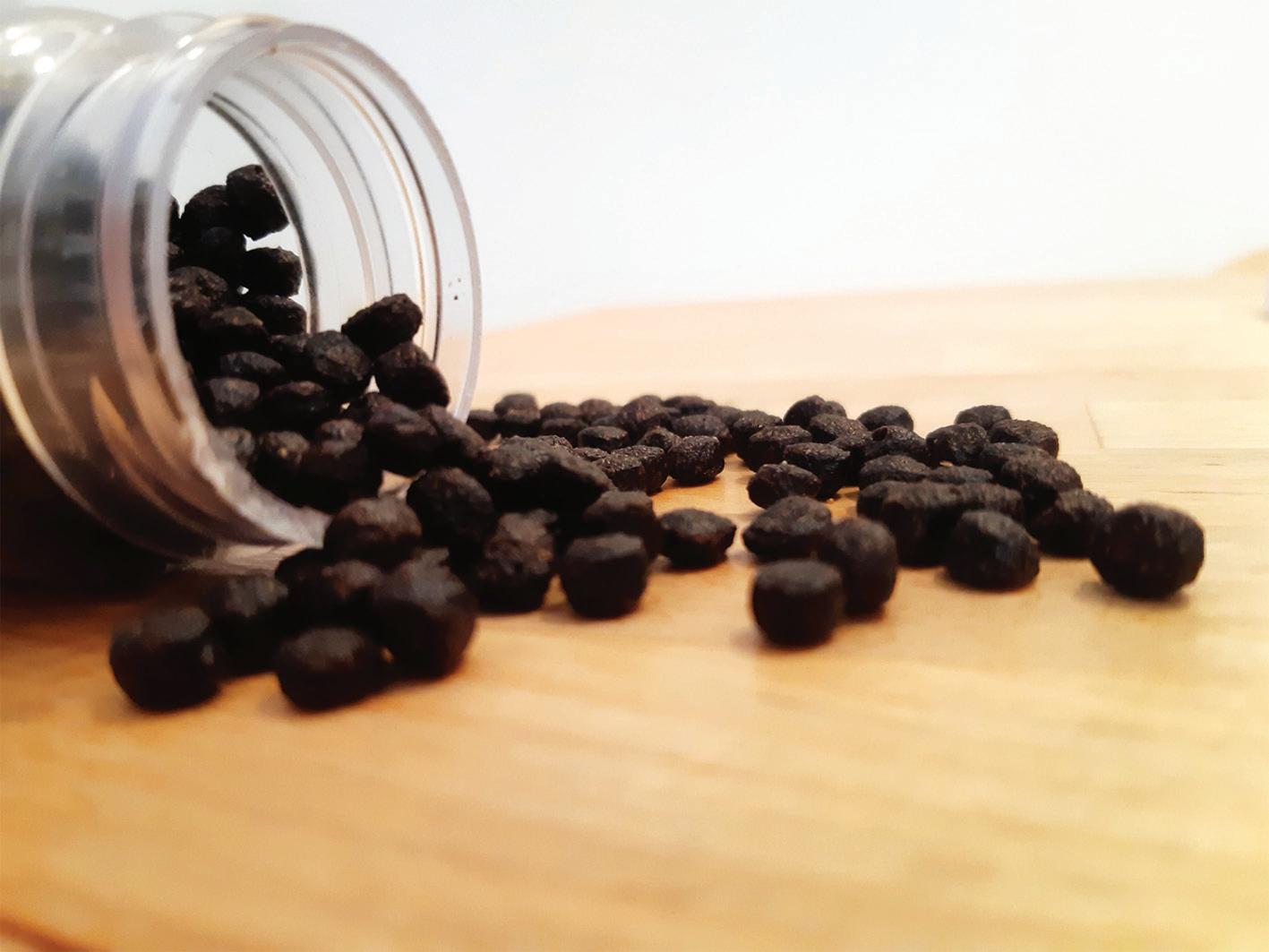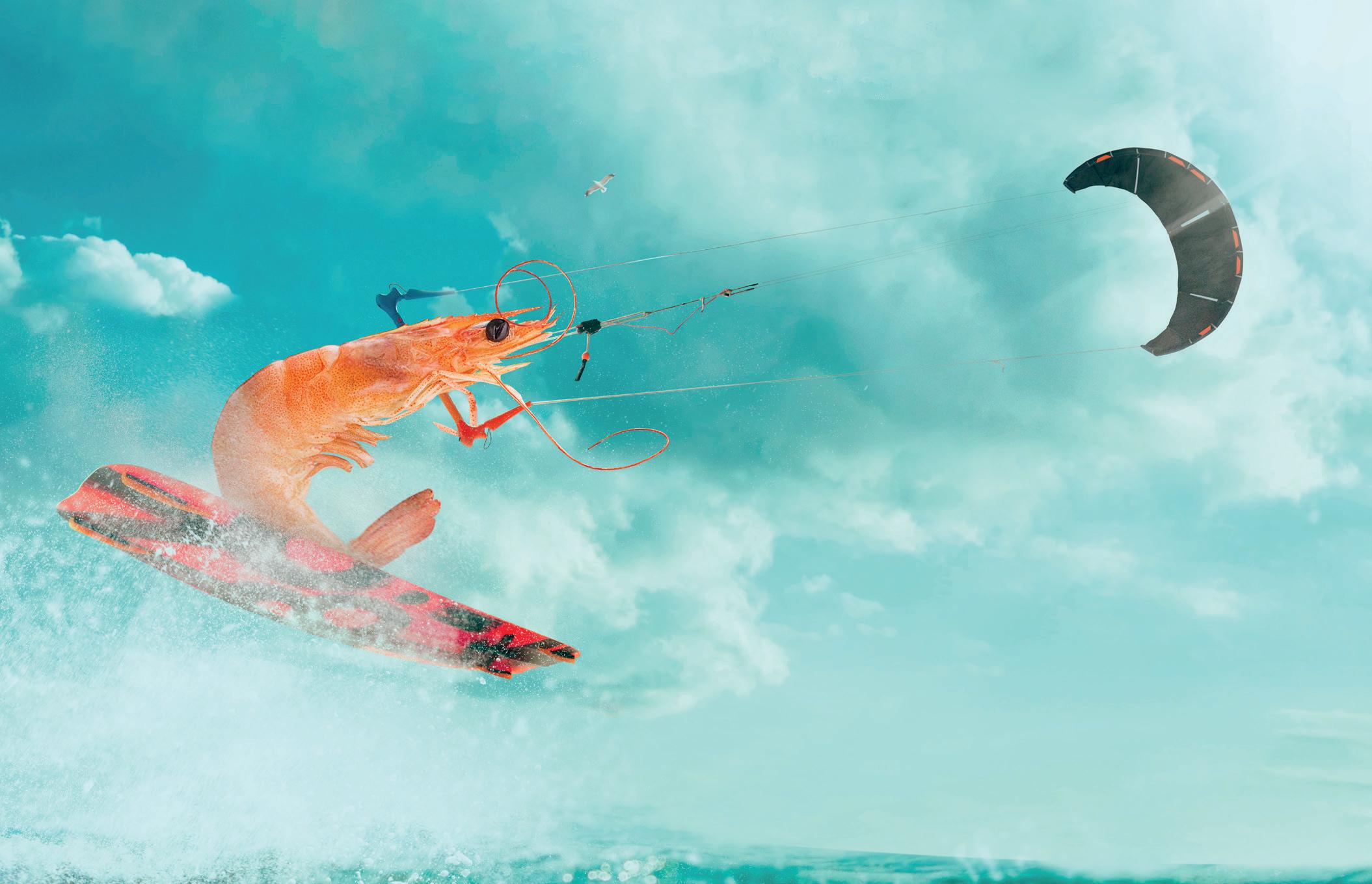
5 minute read
The gut microbiota drives the successful replacement of
The gut microbiota drives the successful replacement of fishmeal by microbial and processed animal proteins in gilthead seabream
Paula Solé-Jiménez, Fernando Naya-Català, M. Carla Piazzon, Itziar Estensoro, Josep À. Calduch-Giner, Ariadna Sitjà-Bobadilla, Danny Van Mullem, Jaume Pérez-Sánchez,
Advertisement
LSAqua and IATS-CSIC

Figure 1. Facilities at Institut of Aquaculture Torre de la Sal (IATS-CSIC; left) and gilthead seabream (Sparus aurata; right).
The future of fish aquafeeds
Traditionally, plant ingredients have been used for replacing marine feed ingredients in fish aquafeeds, achieving high levels of fishmeal (FM) and fish oil (FO) replacement in Atlantic salmon, European seabass or gilthead seabream. However, a shortage of FM ranging from 0.4 to 1.32 million metric tons may occur by 2050, significantly impairing the growth of the aquaculture industry. Therefore, there is an urgent demand for new raw materials to retain farmed fish performance and stabilize the supply of feed.
Among others, insect proteins, processed animal proteins (PAP) or single-cell proteins (SCP) have the potential to play a major role in the development of new aquafeeds. PAPs (feather meal, blood meal, meat or bone meal from non-ruminants) possess excellent palatability, competitive price, and high protein content with fewer carbohydrates than plants. SCP (yeast, bacteria, fungi and other microorganisms) are rich in nutrients, can rapidly grow in different carbon sources and taking up less land than other organisms. Therefore, both protein sources are very promising feed ingredients to reduce the FM content in marine aquafeeds, but the long-term suitability of new feeds formulations is often questioned. Thus, conventional methodologies, but also cutting-edge tools, are needed for unraveling the interactions between diets, host metabolism and gut microbiota, which has co-evolved with the host to develop a mutualistic relationship.
Getting started
LSAqua developed a protein source made by a combination of PAS and bacterial-SCP, LSAqua SusPro, taking into consideration the nutritional properties of FM as well as their substitutes, along with the nutrient requirements of the selected species. The suitability of this protein concentrate was previously assessed in terms of growth and digestibility parameters in shrimp, European seabass and trout. Such studies are now extended to gilthead seabream, focusing on growth performance and markers of gut health, including histopathological scoring of intestine sections, and in-depth analysis of autochthonous microbiota. The gilthead seabream study was conducted within the framework of a Transnational Access project (Breamreplacer, AE170009) in the European Project AQUAEXCEL 2020 with the support of Nutrigenomics and Fish Pathology groups of the Institute of Aquaculture Torre de la Sal (IATS-CSIC), Castellon, Spain (Fig. 1).
The results of the study have been recently published in the open-access Journal Frontiers in Marine Science and highlighted that growth rates with the partial replacement of FM with LSAqua SusPro were indistinguishable from the control group, and only a slight impairment was found with the total replacement of FM.
Nevertheless, a non-pathologic but prevailing proinflammatory effect was found on the intestine of fish fed LSAqua SusPro diets dominated by submucosal hyperplasia with intense infiltration of eosinophilic granular cells and intraepithelial lymphocytes with no changes in the patterns of goblet cells.
Pro-inflammatory effects are not an unexpected flaw, as it is a common metabolic derangement of high levels of FM/FO replacement by plant ingredients. This drawback effect can be partially or totally reversed by the use of feed additives that result in improved intestine integrity and function. How gut microbiota is involved in this process remains a matter of discussion, although the general thinking is that gut microbiota regulates feeding, digestive and metabolic processes as well as immune development and training, being dietary factors one of the most important drivers of intestinal microbial diversity. In fact, the core intestinal microbiota is clearly different among carnivorous, omnivorous, and herbivorous fish species.

Better microbiota for better feeds and fish
As expected, the gut microbiota of gilthead seabream, as most marine fish, is constituted by high abundance (>90%) of Proteobacteria, Firmicutes, Actinobacteria and Bacteroidetes phyla. However, LSAqua SusPro diets had an impact on microbiota and changes in gut bacterial communities were already found at the phylum level, supporting the fact that intestinal microbiota is highly influenced by dietary nutrients. Besides, in contrast to the inflammatory histopathological scoring, microbiota pathway analysis from the inferred metagenome highlighted that proinflammatory signals were under-represented in fish fed LSAqua SusPro diets, whereas pathways pertaining to quorum sensing or anti-microbial production were over-represented (Fig. 2).
Among discriminant bacteria in the different dietary groups, pro-inflammatory Gammaproteobacteria of the genus Psychrobacter, and Acinetobacter decreased with FM replacement, whereas the anti-inflammatory Paracoccus, Arthrobacter and Actinomycetales increased, with a remarkable presence of the Propioniciclava genus in LSAqua SusPro fed fish. This microbiota architecture might serve to trigger a counter-regulatory anti-inflammatory response. In other words, the gut microbiome structure is shifting to deal with the alternative fish feed formulations, becoming intestinal microbial communities a main target to mitigate the drawback effects of most alternative fish fed formulations.
Figure 2. Simplified dotplot map depicting some of the bacteria with more than 1% of proportion in at least one dietary group. The size of the dots represents the normalized counts in percentage, of each bacterium within each group. CTRL and 50/100LSAqua refer to control and combined LSAqua-based diets, respectively. Bacteria above the dotted blue line showed a higher abundance in 50/100LSAqua group; bacteria below the blue dotted line showed a higher abundance in CTRL group.

Concluding remarks
The partial and total FM replacement by LSAqua SusPro is highly promising in terms of growth performance in gilthead seabream. Some detrimental effects were found in gut health markers, but supplementation with pro- or prebiotics emerges as a key strategy to enhance the counterregulatory responses driven by the gut microbiota. This opens new research opportunities for fish nutritionists, physiologists and breeders to promote a more ethical and sustainable farmed fish production according to the principles of the circular economy. This is in line with the LSAqua pursuit of innovative and sustainable solutions with a clear commitment to social responsibility and safety.
References
Solé-Jiménez P, Naya-Català F, Piazzon MC, Estensoro I, Calduch-Giner JÀ, Sitjà-Bobadilla A, Van Mullem D and Pérez-Sánchez J (2021) Reshaping of Gut Microbiota in Gilthead Sea Bream Fed Microbial and Processed Animal Proteins as the Main Dietary Protein Source. Front. Mar. Sci. 8:705041
More information: Danny Van Mullem
CEO LSAqua, Belgium E: hello@lsaqua.be
Jaume Pérez-Sánchez
Head scientist Institute of Aquaculture Torre de la Sal (IATS-CSIC), Castellón, Spain E: jaime.perez.sanchez@csic.es
Shrimply fit!

Lowers mortality in shrimps and increases resistance against the White Spot Syndrome Virus
(WSSV)
info@provita-supplements.com www.en.provita-supplements.com











